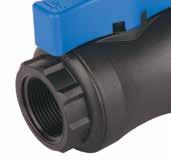














































































































KEEP THE dialogue going. That’s the message from DairyNZ chairman Jim van der Poel as the Government mulls over how to deal with agricultural emissions before the election.



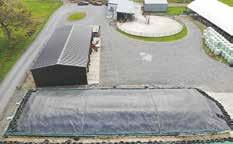

Van der Poel says they haven’t heard anything from government about a proposed fertiliser tax being passed by Parliament before the October election. But he concedes that time is running out to pass any of the He Wake Eke Noa (HWEN) legislation, given the election is only a few months away. He says the idea of a ‘fert tax’ is not something the industry has talked about and there is no framework developed around such a proposal.
“Pricing is just one aspect of HWEN,” he told Dairy News
He says HWEN includes a much broader range of initiatives, including farmers knowing their emission numbers and having guidelines around these to incentivise farmers to make changes to comply with government requirements. He says, whether HWEN is dead or not, everyone accepts NZ has a commitment internationally to reduce agricultural emissions.
“My message to government is that, in the spirit of the partnership, if we can’t stand up HWEN and we believe there is a better way
of doing that, we should continue to work together and see what that looks like.
“If you can work together on
what that looks like, it’s more likely to be enduring. If we start splitting things up it’s going to be a mess,” he says.
Van der Poel says dairy farmers see themselves as part of the solution; they know they must do their part for NZ to meet its commitments.
But he says it’s logical that they want to know what they have to do. If there is a levy, they want to know that money contributes to useful research.
“Farmers take great pride in the fact they have good effluent systems in place, that they are managing their nutrients properly and have fenced off waterways. There are many initiatives taking place on farm and people will buy in what’s needed, provided it is logical,” he says.
But he says farmers will be less supportive if something that doesn’t make sense is imposed on them.
PETER BURKE peterb@ruralnews.co.nz
“My message to government is that, in the spirit of the partnership, if we can’t stand up HWEN and we believe there is a better way of doing that, we should continue to work together and see what that looks like.”DairyNZ chair Jim van der Poel says dairy farmers see themselves as part of the solution.

 SUDESH KISSUN sudeshk@ruralnews.co.nz
SUDESH KISSUN sudeshk@ruralnews.co.nz


DAIRYNZ’S PROPOSAL for a single national animal evaluation breeding index that incorporates genomics is being opposed by a second major herd improvement company.
Dutch company CRV says while it agrees with the concept proposed by DairyNZ, it “does not endorse the proposal as it stands”. It joins New Zealand farmer-owned herd improvement company LIC which has also refused to back the proposal.
CRV New Zealand managing director James Smallwood points out that CRV in the Netherlands is a founder and full partner of the EuroGenomics Cooperative.
“Through this partnership we have experience in sharing reference pop-


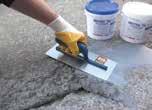
ulation data with industry partners to achieve the most reliable genomic evaluations,” he told Rural News.
“What has been proposed by DairyNZ is one option. The learnings from our EuroGenomics partnership demonstrate there are alternative ways the New Zealand dairy industry can work together to get the best outcome for our farmers.”
DairyNZ – through subsidiary New Zealand Animal Evaluation Ltd (NZAEL) – believes that creating one animal evaluation index would ensure breeding decisions are made consistently.
It proposes that a single evaluation will be co-ordinated by NZAEL – as an industry-good, credible source of data available to everyone to use.
The sector is currently using three Breeding
Worth animal evaluation indexes – LIC, CRV and NZAEL. DairyNZ chair Jim van der Poel says this creates confusion in the sector – and sub-optimal outcomes.
“We believe the best
way to help dairy farmers achieve the highest rate of genetic gain in their herd is to have one independent Breeding Worth (BW), including genomics and involving all the industry players.”
But in a letter to its farmer customers, CRV claims that recent communication from DairyNZ and NZAEL has suggested that the New Zealand dairy industry has not made comparable genetic gain to other countries in recent years.

CRV disagrees with this sentiment, the letter states.
“Over the last 10 years, despite the challenges of genotyping across multiple breeds, CRV has delivered significant genetic gain to New Zealand dairy farmers through lifts in the genetic merit of its bulls.
“CRV’s genetic gain per year in BW terms went from 11 points (graduate bulls 20082015) to 21 points (graduate bulls 2016-2023) as a result of the company’s continuous investments in data and technology to improve genomic selection in our breeding programmes.
“But it’s not all about BW. CRV has also leveraged its expertise to expand the range of non-production traits it offers, including A2, polled genetics, FE tolerant genetics and LowN sires. These traits have helped our customers achieve their individual farm business goals and delivered genetic gain to the New Zealand dairy industry.
“For the last 54 years, CRV has helped dairy farmers in New Zealand
breed healthier more efficient cows. It is our core business and will continue to drive everything we do.”
Last month, in a letter to LIC shareholders, chief executive David Chin says the co-operative doesn’t endorse the proposal that has been suggested.
“We agree in principle to a single index, however, where our views diverge is around the actual value that this would unlock for New Zealand dairy farmers with the model that has been proposed.
“There are two key things for you to note as an LIC shareholder – we’re already getting higher rates of genetic gain. Long-term users of LIC genetics have almost doubled the rate of genetic gain in their herds over the last 10
years – now at 18gBW per annum.

“This surpasses the industry average of 10BW, as stated by DairyNZ. In fact, we have already surpassed the DairyNZ proposal’s goal of 15BW. Genomics has been a key contributor to this success.”
DairyNZ is seeking farmer feedback and public consultation closes 5pm on June 27.
Smallwood says CRV supports DairyNZ’s move to improve the accuracy of data recorded in the New Zealand dairy industry.
“That’s why CRV has invested millions of dollars to support our collection of genotypes for our reference population and phenotypes through programmes such as our own Progeny Test programme,” he says.
For almost 20 years, CRV in New Zealand has invested in genomics to help dairy farmers breed better cows faster.
“We started work on our reference population in New Zealand in 2005 in cooperation with international partners,” says Smallwood.
“Any new single national animal evaluation process needs to clearly demonstrate how it will continue to invest at this level in genomic and phenotypic data collection and breeding technologies, for the benefit of New Zealand dairy farmers. We do not believe DairyNZ’s current proposal adequately addresses this.”
FONTERRA HAS lifted its monthly advance rate paid to farmer suppliers by 30c/kgMS for the next six months but that may not be enough for many farmers.
Federated Farmers dairy chair Richard McIntyre says rising farm input costs has taken the break-even price for many to $9 and he expects many farmers to be facing negative cashflow situations.
“With continued on farm inflation and an average break-even milk price of around $9, Fonterra’s 2023-24 opening was not what farmers wanted to hear, but better than some were expecting,” he told Dairy News
“This means that many farmers will be in negative cashflow situations and will need to work with their advisors and banks to find ways to make ends meet.
“This could include, reducing excess costs, creating efficiencies, deferring capital expenditure and reducing loan principal payments.”
Farmers will also be nervously watching inflation figures and Reserve Bank commentary to see if they’ve seen the end of the interest rate hikes and get an indication of when they might start to come down.
McIntyre notes that Fonterra has recognised that cashflow is the most immediate concern of farmers and have altered their advance payment guidelines to allow farmers to be paid more of their milk payment earlier.

“This does however come with a burden that Fonterra will have to react and communicate with farmers early should the forecast milk price trend downwards,” he says.

For milk supplied between June and December, the advance rate is $6/kgMS based on
a forecast price mid-point of $8/kgMS. Last season, Fonterra paid an advance rate of $5.70 with a forecast mid-point of $8.20/ kgMS. Fonterra’s opening forecast farmgate milk price for this season is $7.25 to $8.75/kgMS.
Chief executive Miles Hurrell says this reflects an expectation that China’s demand for whole milk powder will lift over the medium-term.
“We expect demand to gradually strengthen over the course of FY24 as China’s economy continues to recover from Covid-19.
“However, the timing and extent of this remains uncertain, with China’s in-market whole milk powder stocks estimated to be above normal levels following increased domestic production. This is reflected in our wide opening forecast range for the season.
“We recognise the pressure farmers are under and have designed a new advance rate guideline to get cash to farmers earlier in the season.
“Our strong balance sheet allows us to make these changes and we will be using this new advance rate guideline going forward, starting with the season about to commence,” says Hurrell.
Fonterra Co-operative Council chair John Stevenson says the revised advance rate schedule will be appreciated by farmers.
“It shows that board and management have heard council and farmer feedback that the co-op needs to get more cash to farmers earlier. With receiving more of the milk price sooner, farmers will need to be mindful of the possible impacts on milk payments and cash flows later in the season in the event of downward revisions to the forecast milk price.”
Stevenson adds that in the current environment of high interest rates and inflationary costs, the $8/ kgMS midpoint of the 2023/24 opening forecast
will mean farmers will be carefully looking at their budgets heading into the new season.
“This forecast reflects
an expectation that demand from China for whole milk powder will lift over the medium term.”
•
•
•
•
the most protected sectors in global trade, due to both tariff and non-tariff barriers.
THE EXECUTIVE director of Dairy Companies Association of New Zealand (DCANZ) says her organisation supports ongoing efforts from the NZ Government to bring down trade barriers to ensure a diversity of trade opportunities for New Zealand exporters.

Kimberly Crewther’s comments come at a time when there is heightened activity around trade issues with Trade and Export Growth Minister Damien O’Connor making several overseas visits to help boost trade, and the National Party saying they want to obtain more trade with India.
For the past week, O’Connor has been in the UK meeting with Commonwealth Trade Ministers and then heading to the OECD in Paris where he’s the vice chair of the Ministerial Council. Against this background is the on-going economic war between the US and China and the war in the Ukraine, all of which are disrupting global trade.
Crewther says dairy remains one of
She says DCANZ estimates that NZ dairy exporters have access to just 12% of global dairy consumption at tariffs of less than 10% or without encountering a significant non-tariff barrier.
She says the UK FTA is an important trade milestone, removing tariffs on all dairy products over a short period, and it’s pleasing to have this agreement now in place.
“The EU agreement is tracking towards signature, but for dairy, this did not have the same quality of outcomes as the UK agreement.
“The market access opening is more incremental and will mean the EU market remains mostly shut to New Zealand dairy exports.
“It is important that efforts continue to have dairy access into the EU, and also into Canada and Japan, match the quality of the UK outcomes. The UK has demonstrated the kind of trade liberalisation that should be possible for all G7 members,” she says.
Crewther says it’s important that NZ continues to seek new high quality and comprehensive agreements with
other markets, such as India. DCANZ sees significant potential for our dairy products to play a complementary role to domestic supply in
2
Now only $5,650 +GST.
FRANKLY, THE DR200SE IS A BIT OF A LEGEND. It’s a straight-up, rugged and reliable bike that’s been a firm favourite of Kiwi farmers for over 30 years. And with five hundy knocked off for a limited time, it’s great value and available from your local Suzuki dealer now.
www.suzuki.co.nz

one will be supported by broader deepening of the bilateral relationship, as suggested by the New Zealand Indian Business Council. They have said that there is significant potential to make progress in that regard,” she says.
But it’s a well-known fact that trade agreements come about because of a broader bilateral relationship – sometimes sparked by special people and friends.
A classic example of this was the role played by the famous NZ born writer and activist Rewi Alley who lived in China 60 years and who was well connected to Chinese leaders. Many credit his personal links with the Chinese government as being instrumental in the opening of that market for NZ in the 1970s. In essence it was the relationship that helped trigger the trade.
Crewther says China remains an important market for the NZ dairy industry, which is supported by a highquality FTA.
the Indian market, and a comprehensive trade agreement should be a priority.
“We believe that efforts to secure
She says it’s a market that continues to value high-quality, sustainably-produced NZ dairy products, and which does not impose trade restrictive trade barriers on our exports.
NATIONAL’S SPOKESPERSON on agriculture has labelled talk that the Government may introduce a fertiliser tax as “ridiculous”.

Over the past week or so, rumours emerged that the Government is fed up with the primary sector failing to agree how agricultural emissions should be dealt with via the He Waka Eke Noa (HWEN) collaboration between the Government and the sector. There has been
“A punitive tax will not change behaviour and will simply send jobs and production overseas. I think the Government have now got themselves between a rock and hard place and there is not enough time before the election to pass the HWEN legislation. What have they decided to do is think about introducing a tax on productive farmers, which is madness,” he says.
McClay says National will be coming out with its emissions policy over the next few weeks and, while he won’t reveal the
is an extremely
talk of them unilaterally introducing a ‘fert tax’.
Todd McClay says he’s not sure if the idea is about reducing emissions or just a flat punitive tax on farmers, which he says will drive up food prices and put farmers out of business.
“A quick back-of-thecard assessment is that the typical dairy farmer in Canterbury will face $12,000 a year additional tax bill, and farmers in the Waikato somewhere between $5,000 and $6,000. So, all that this tax would do is put costs on farmers at a time when they need to be competitive and producing as much as they can,” he told Dairy News
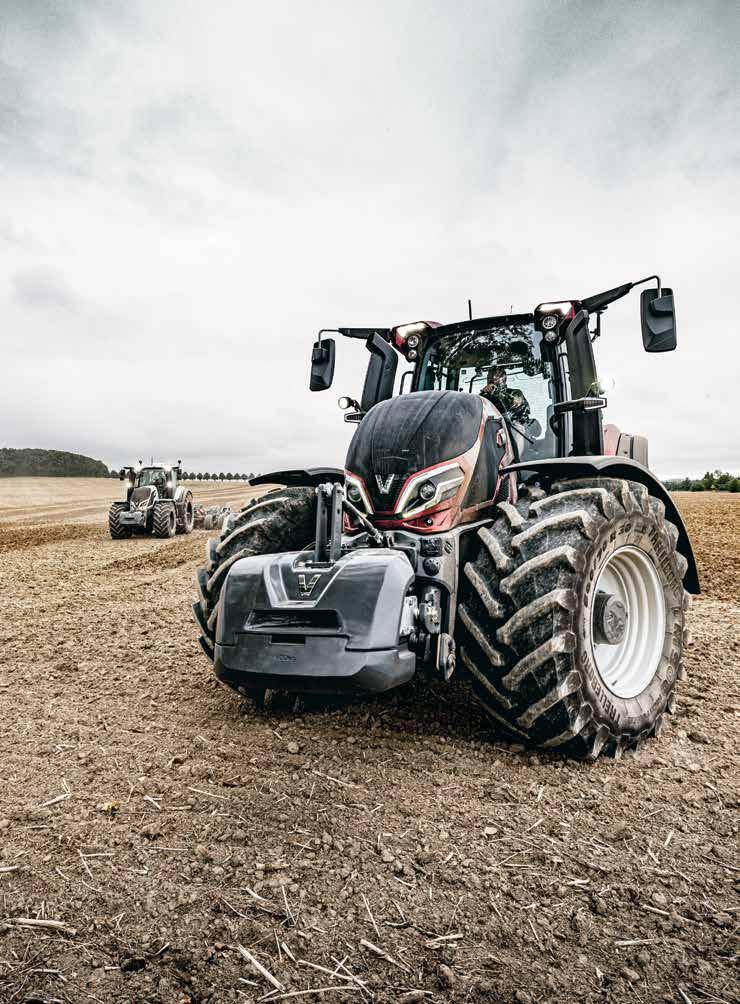

According to McClay, HWEN is all but over and blames the Government for showing bad faith to the primary sector. He says government said at the start, lets join and find solutions, but in the end just walked away. He says the situation now is that Agriculture Minister Damien O’Connor is “sitting in his office dreaming up all sorts of ludicrous taxes” which farmers don’t have an option to avoid or mitigate against.
details in advance, he says there are some bottom lines.
One of these includes a full review of the science and targets relating to agricultural emissions and comparing that to actual warming. He says it is important because they want to ensure NZ meets its obligations under the Paris Accord, but farmers should not be forced to do more than they need to.
He says National will not agree to any proposal that sends jobs and production offshore and they want to look closely at the tools that are available to mitigate agricultural emissions.
McClay points out that farmers, foresters and tradies are being unfairly penalised by the ‘ute tax’ which he describes as punitive. He says, as wellmeaning as Labour might be, taxes for the sake of it will not change behaviours. He urges O’Connor to get out in the field and rebuild the trust his party has lost through its treatment of the farming sector.
“The minister just doesn’t seem to understand that agriculture
“A quick back-of-the-card assessment is that the typical dairy farmer in Canterbury will face $12,000 a year additional tax bill, and farmers in the Waikato somewhere between $5,000 and $6,000.”
Keall says the WMP contract curve at the last auction appeared to show momentum, with buyers
paying a premium for product stretching into the middle of the season.
But that has largely dissipated, with prices flatlining in a US$3,150$3,200/MT range this auction.
Keall says the most notable feature of last week’s auction was China’s continued absence from the market. The North Asia group took only around 34% of the WMP on offer this auction, equivalent to the sort of proportion it was buying during its zeroCovid period last year.
“Looking over the last handful of auctions – and six months on from the ending of those restrictions – China’s return to the global dairy market has been modest and uneven.

“This isn’t hugely surprising. Local WMP production remains strong, while domestic consumption remains comparatively subdued. Recent Chinese economic data has printed below expectations too, undermining the notion that a strong domestic recovery will put a rocket under dairy auction prices anytime soon.”
ASB has retained its $7.25/kgMS farmgate milk price forecast for the season.
Keall says the prevailing global dairy market dynamics don’t look hugely supportive for prices.
“As we’ve said for some time, global dairy supply looks to be past the lows of recent years at the same moment that global growth is slowing, crimping consumption.”
If there’s a silver lining for farmers, it’s that the NZ dollar continues to underperform.
“Indeed, this was the catalyst for our decision to add 25c to our milk price forecast last week.
“The Kiwi continues
to trade in a lower band in the aftermath of the RBNZ’s surprise dovish turn a fortnight ago. Relative interest rates look to have peaked in NZ’s favour and have shifted towards the US. If the NZ dollar heads lower, earlier than we expect, that could yet push our forecast a little higher still.”
Meanwhile cheese prices continue to soar. Last week’s GDT saw cheddar prices rise 7.4% to US$4,668/metric tonne.
Westpac senior agri economist Nathan Penny says the world now definitely loves cheese.
“Indeed, reflecting this global love affair, since late 2021, global cheese prices have averaged 32% higher than the five-year average prior – between November 2016 and October 2021.
“Pinning down the exact genesis for the cheesy trend is a question for the marketing experts, however, we suspect it has something to do with Covid lockdowns, the ease of pizza deliveries during said lockdowns, and therefore a new-found love of cheese in the large fast-growing markets in Asia.”
However, New Zealand is not relatively wellplaced to benefit from high cheese prices.
“While increasing global consumption of dairy products is normally a good thing for New Zealand, we are not wellplaced to benefit from higher cheese prices, at least in the short term,” says Penny.
“New Zealand dairy companies have limited (factory) capacity to produce more cheese. And while cheese production has expanded where possible, in the short term, these companies are stuck producing other less profitable products like whole milk powder.”


TROUBLED CANTERBURY milk processor Synlait has received a boost with Chinese authorities giving the company the green light to manufacture and export infant for the next four years.

a profit downgrade at the end of April, saw its share price nosedive. Last week, following news of SAMR registration, its share price rose 23c/share.
In a statement, a2 says production is expected to commence later this month with product in market later this year.
Nuchev, South Island Dairy and Westland.
“Bernard was behind the vision and creation of MVM and played an integral role in bringing this world-class asset to life with our strategic partner
China Animal Husbandry Group (CAHG). On behalf of a2 and CAHG, we thank Bernard for his substantial contribution to the business and wish him well for the future,” a2 says.
a2 Milk Company managing director David Bortolussi says it looks forward to making upgraded China label IMF product available to parents in China.
Synlait manufactures infant formula for a2, which is also a cornerstone stakeholder.
The Chinese State Administration for Market Regulation (SAMR) has notified Synlait of the successful re-registration of a2 Milk Company’s Chinese labelled infant formula (stages one, two and three) at its Dunsandel facility.

Synlait manufactures infant formula for a2, which is also a cornerstone stakeholder.
As the manufacturer of those products, the SAMR registration is held by Synlait and attached to its Dunsandel facility.
The re-registration is pivotal for the ongoing success of the manufacturing and supply agreement that Synlait and a2 have.
Synlait chief executive Grant Watson says they are thrilled to have achieved this milestone, which is pivotal to the success of its Advanced Nutrition business.
“Our shareholders, staff, customers, and farmer suppliers all benefit from the certainty of today’s re-registration and continued China market access,” he says.
“Synlait and a2 Milk Company have a longstanding and complementary partnership, and we look forward to continuing to support their China growth ambitions.
The re-registration is a very important milestone and we have worked hard together to ensure its success. We thank SAMR and the Ministry for Primary Industries (MPI), for their support during this process.”
Synlait, which issued
“And building on the strong brand loyalty we have developed with Chinese families over the past decade as the pioneer and leader of the A2 protein category.
“The approval provides a2MC with continued access to China’s substantial registered domestic infant milk formula market, which remains the key focus of our refreshed growth strategy.”
Meanwhile a2 has announced that Bernard May, chief executive of its Mataura Valley Milk plant in Southland, is leaving after seven years with the company.
It says John Roberts has been appointed as interim general manager MVM to support a2’s chief supply chain officer, Chopin Zhang, to accelerate the transformation of the company’s supply chain.
“The focus will be on developing the company’s infant milk formula (IMF) manufacturing capability and utilisation through in-sourcing certain nutritional products and prioritising new product development at MVM.”
John Roberts brings significant IMF manufacturing development and operational experience in New Zealand and China to MVM, having held various leadership and consulting roles over his career at Yashili, Synlait Milk, Food Union,
EPRINEX Pour-On is truly one of a kind. It is the only drench with a worldwide NIL milk withhold when treating lactating cows - but it is also the number one drench for return on investment by far.
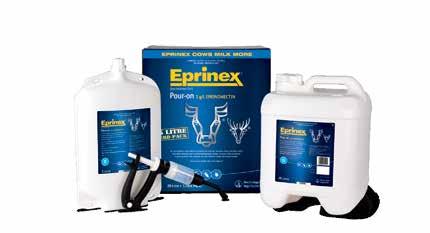
Gastrointestinal worms can significantly impact productivity in dairy cattle.
Repeated studies, including NZ dairy cattle trials, have shown the effect EPRINEX treatment within a week of calving has on parasites, can result in a +0.03 kg per cow, per day, lift in milksolids (MS) production over the whole lactation. That’s an increase of 8.22 kg MS per cow, over a 274 day lactation!
Based on an average herd size of 500 cows and a $9.00 payout, this can generate a return of $67.44 per cow. EPRINEX makes a lot of sense... and cents.
For more info go to futureproducers.co.nz



A SHRINKING milk pool in Australia is forcing major processors, includ-
ing Fonterra, to outbid each other and secure farmer suppliers for the new season.
In Fonterra’s case, the co-op is offering Australian suppliers $1.50/kgMS
more than what it’s forecasting for New Zealand farmer shareholders this season.
Last month Fonterra Australia announced an opening weighted average milk price for the 2023/24 season of A$8.65/kgMS.
Converted into New Zealand dollars, it amounts to $9.50. For NZ suppliers, the co-op last month opened with a margin of $7.25 to $8.25, and a midpoint of $8/kgMS.
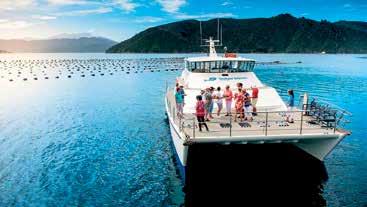

Fonterra says its Australian milk price is made up of the minimum monthly rates set out in Fonterra Australia’s milk supply agreement, together with standard production and quality incentives.
Fonterra Australia managing director René Dedoncker notes that Australian farmgate pricing for the season ahead remains higher than international commodity values, which have fallen by 17% in the past year. However, he says it is supported by the strength of Fonterra Australia’s domestic business which comprises most of its revenue.
“Despite the decline in international prices, the outlook for dairy remains generally positive with global demand currently expected to lift in the medium-term, with only modest supply growth forecast in export
Dedoncker says that Fonterra Australia’s business was well-placed to continue to deliver good

“Our Australia business continues to perform well, with our Consumer and Foodservice sales channels maintaining their market-leading positions. Our focus remains on putting the milk from our farmer suppliers into the highest value products, managing our costs and maintaining a profitable business.
“We are confident in our price position and our ability to be competitive, with our diversified product mix, sales channels and access to domestic and export markets giving us options for our farmer suppliers’ milk.”
Fonterra’s main rivals in Australia are offering higher farmgate milk price: Bega Cheese has opened with A$8.80/ kgMS and Canadian dairy giant Saputo A$9.05/ kgMS.
supplier relations director Anthony Cook says for the new season, SDA has enhanced its milk price offer to meet the needs of more suppliers.
“We have invested in new payment options and incentives, including for farmers who want to invest in the growth and sustainability of their dairy business,” says Cook.
“As part of our ongoing commitment to the Australian dairy industry, we have expanded our tailored investment and finance support, payment options and continue our specialist services to further assist suppliers in meeting their short- and long-term business goals. We are also proud of our continued investment in industry initiatives, in our plants and in the communities where our people and our dairy farmers live
and work.”
Australia’s year-onyear national raw milk production volumes are decreasing, down to 8.5 billion litres in 202122, and forecast to fall slightly below 8 billion litres for the 2022-23 season. The new season, which started June 1, is expected to record another fall of up to 4%, lowering the national milk yield to 7.8 billion litres.
The dwindling milk pool and high farmgate prices are putting enormous pressures on dairy manufacturers.


Executive Chairman of the Australian Dairy Products Federation (ADPF), John Williams says the current operating conditions for manufacturers are tough and need to be countered so that Australian regional jobs and economies are
not hit hard if processors are forced to rationalise their operations.

“On top of the decline in global prices, Australian dairy processors are contending with low volume growth, exorbitant overhead and input costs (inclusive of energy, transport and raw milk), a tough and highly competitive domestic trading environment, and rapid growth in import competition,” Williams says.
He notes that, year-todate (February 2023), the volume of imports from New Zealand are up 22% and imports from the US are up 46%.
“Further, the current 20% higher farmgate milk prices being paid in Australia compared to New Zealand, places Australia at a competitive disadvantage not only in export markets but it is also being reflected on our supermarket shelves with New Zealand made cheese and butter priced significantly cheaper than Australian made products,” Williams says.
Despite inflation related cost of living pressures, encouragingly the demand for nutritious dairy products continues.
“However, to participate as a viable supplier to meet this demand and provide confidence in the security of Australian manufactured products to our customers, we need more of that core ingredient of ‘raw milk’ and this currently is a leading challenge for the Australian dairy sector,” he says.


NEW WAIKATO Federated Farmers president Keith Holmes believes farmers are being pro-
gressively starved out of existence.
Holmes, who was elected last month, describes farmers as goose that lays the golden egg, who must be saved from extinction.
He says the New Zealand economy has no alternative to the “agriculture engine house”.
“The atrophy of both farming businesses and people is colossal,” he told Dairy News
“Farmers are not rewarded for their worth to the NZ economy and society.
“Farmers are cash poor and even their capital worth is being massively eroded: the signs of
He started in the dairy industry as a lower order sharemilker before purchasing “a run-down farm” in Tauhei in 1979. The farm was sold last year and he’s now moving into a 53ha dairy farm in Waihou. Holmes plans to run British White cows, Wiltshire Horn sheep, their progeny with some cropping and forestry on the side.
that are they can’t afford to employ New Zealanders.
“They can’t afford to employ enough competent staff to use what technology is available to them.”
Holmes claims it is a macro economic management issue that successive governments have and continue to ignore.
“So, my challenge is to change the direction of NZ economic management, to put the cash in farmers’ hands to do the things that society asks of them.
“Save the goose that lays the golden eggs before it dies, and NZ will be a richer and better place.”
He describes himself as “a rare commodity – a product of the Waikato Federated Farmers farm cadet scheme”.

Holmes started his association with Feds 56 years ago as a Young Farmers Club delegate.
He has served in various roles within Feds including provincial vice president and arable section chair.
He started in the dairy industry as a lower order sharemilker before purchasing “a run-down farm” in Tauhei in 1979. The farm was sold last year and he’s now moving into a 53ha dairy farm in Waihou. Holmes plans to run British White cows, Wiltshire Horn sheep, their progeny with some
cropping and forestry on the side.
“My uniqueness is that extraordinarily good people and the state gave me opportunity to succeed in dairying without family money,” he says.
Holmes won the Young Farmer of the Year title in 1977 and says many doors opened after that.
Holmes replaced Jacqui Hahn, who retired after her three-year term.
In her final speech as president, Hahn told members at the annual general meeting that in the Waikato, the biggest time, money and resource issue in play is Plan Change 1 for the Waikato and Waipa River catchments.

She noted that Environment Court mediations have just been completed.
Hahn described the mediations “a totally frustrating process with too little mediation taking place”.
“It was great to have other parties and the Commissioner asked to hear from the farmers as time went on.
“It’s clear we don’t get justice when it’s a legal system.
“It is hard to achieve practicality in rules, when it’s based on catching the one sly backward person and making it a costly process for everyone else to prove they are not that person.”
price per hectare rose by 6.1% in the past 12 months.

RECENTLY RELEASED

data from the Real Estate Institute of New Zealand (REINZ) shows there were 224 fewer farm sales (-48.6%) for the three months ended April 2023, compared to the same period last year.

Overall, there were 237 farm sales in the three months ended April 2023, compared to 238 farm sales for the three months ended March 2023 (-0.4%) and 461 farm sales for the three months ended April 2022.
In the year to April 2023, 1208 farms were sold, 566 fewer than in the year to April 2022, with Dairy farms down 37.5%, Dairy Support down 10.6%, Grazing farms down 21.2% , Finishing farms down 30.2% and Arable farms down 35.9%.
For the three months ended April 2023, the median sales price per hectare for dairy farms was $39,190, compared to $36,925 for the same period in 2022.

Overall, the median
Meanwhile, the median sales price per kilo of milk solids was $37.59/kgMS for the three months ended April 2023, up 15.2% on $32.63/kgMS for the three months ended April 2022.
At the same time, finishing farms averaged a median sale price per hectare of $38,870 for the three months ended April 2023, a 9% increase on the April 2022 figure of $35,655 per hectare.
REINZ Rural spokesperson Shane O’Brien says the sales levels for April 2023 were in line with the previous three months and were widely anticipated following a continued trend in the drop in farm sales across all parts of New Zealand since the start of the year.
“Sales volumes are down on previous months across all parts of New Zealand; however, a slightly lower drop is evident in the South Island regions,” O’Brien says.
“As has been stated previously, the demand for land for timber and carbon has reduced on



the back of the recent policy announcements by central government and the fall in the New Zealand unit price for carbon, and we believe this is likely to remain for much of 2023,” suggests O’Brien.
“The recent reduction in the Fonterra farmgate price to a mid-point of $8.30 has seen many buyers concentrate on current farm performance and are not looking at further acquisition,” he says.
O’Brien adds that on-farm inflation costs such as fuel, fertiliser and labour also impacted buyer decisions.
“Uncertainty on the outcome of this year’s general election and
the unknown impact this will have on farming compliance and regulatory requirements is very much at the forefront of farmers’ minds, with many who have been active in the market
now adopting a wait-andsee approach which is being borne out with the reduction in the number of listings of properties for sale and the corresponding lower number of confirmed sales,” says
O’Brien. Important to note, however, is that the farm values remain steady across most regions, highlighting continued confidence in the farming sector.
O’Brien says purchasers are willing to pay for the right property if it suits their requirements, with abundant sales evidence indicating prices in line with 2021 and 2022, particularly in the arable, dairy, and dairy support sectors.
In April 2023, Grazing farms accounted for a 32% share of all sales. Finishing farms accounted for 24% of all sales. Dairy farms accounted for 17% of all sales, and Dairy Support farms accounted for 10% of all sales. These four property types accounted for 83% of all sales during the three months ended April 2023.
most
and by far the most vital piece of
on your farm, which is why it is crucial to ensure it is always working at its best.







FMG Region-off teams up AgriKidsNZ, Junior and Young Farmer winners for a regional showdown. Provincial glory and a $5,000 prize for a good local cause are up for grabs. Vote now at fmg.co.nz/region-off

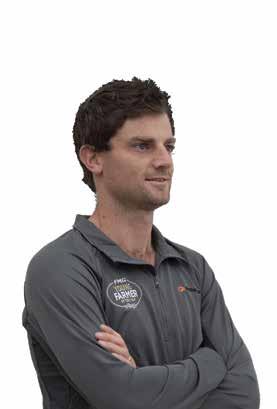

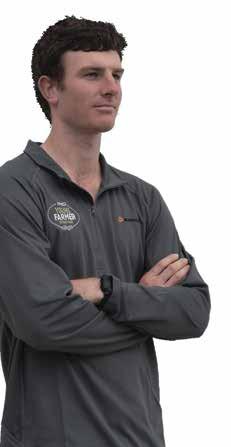
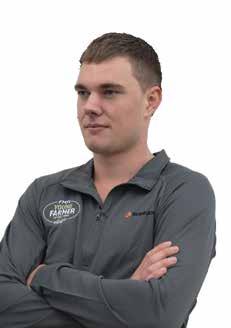
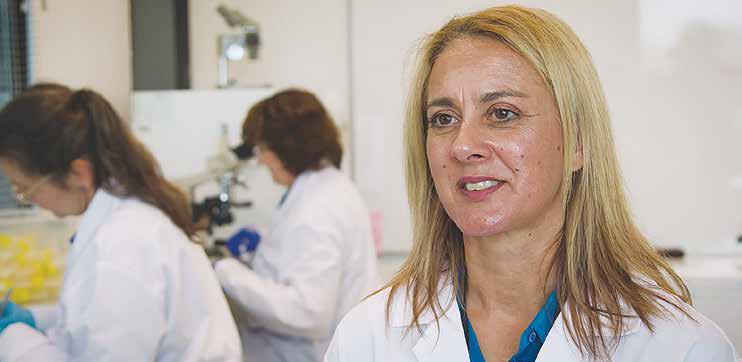
A RUNNY nose and fever can be caused by the flu, Covid, an allergy, or something completely different. Sometimes infected people have no symptoms.
Similarly, Staph. aureus is a bacteria that doesn’t always trigger an immune response in infected cows. Despite being common, it can remain hidden in the herd, leading to many cows being infected, according to Farm Medix, a company providing mastitis reduction solutions for farmers.
A cow with a somatic cell count (SCC) as low as 20 or as high as a million may have Staph. aureus. While SCC is an effective measure of immune response, it should not be used to determine a cow’s infection status. At bulk tank level, SCC gives an overall indication of the health status of the herd. It is generally accepted that 100 SCC level corresponds to approximately 10% of the herd with subclinical mastitis, 250, 25%, etc. but does not give any indication of what the problems are. Staph. aureus infections are mostly subclinical, showing few signs that something is going on.
Farm Medix chief scientific officer Natasha Maguire points out that only 5% of cows infected with Staph. aureus will show clinically.
To effectively combat Staph. aureus, it is crucial to individually test the entire herd for the pathogen, says Maguire. Any strategy that uses SCC levels to select cows for testing, typically above 150 SCC, may offer

temporary relief. But it doesn’t fully solve the problem.
Infected low SCC cows will remain in the herd and continue to spread the infection, says Maguire.
“A single infected cow can expose up to six herd mates in a single milking due to Staph. aureus’ contagious nature”, she says.
“For every clinical cow with Staph. aureus, many others will be hidden, and driving up SCC.”
Staph. aureus is deceptive. Like no other infection, it has a major impact on milk quality, productivity, costs and even fertility. A recent farm study conducted in the Waikato revealed that “clean” cows produced 45% more milksolids than Staph. aureus cows.
Driven by these facts, Farm Medix says it developed a unique approach to control Staph. aureus infections, offering farmers easy on-farm diagnosis methods using the gold standard of bacterial plate culture for their


diagnostic tests.

“Traditional approaches based on clinical cases and somatic cell count often fail to detect the predominantly subclinical mastitis cases caused by Staph. Aureus, making this new solution a major positive shift,” says Maguire.
An early, systematic, and accurate detection is the only way to stop the infection before it spreads. Screening each cow in a herd can serve as a reset point when a herd faces persistent challenges. Then, to maintain a healthy herd, all new cows entering the herd – Clinical, Fresh, and Replacement cows –should be tested.
Maguire stresses the importance of proper sampling techniques.
“Sampling is critical and needs to be done directly from the teat into a sterile container to minimise any potential contamination from shared milk lines among cows.”
Proper milking and herd management pro-
cedures should also be implemented to limit contamination risks, such as segregating infected cows and milking them last, along with using recommended active ingre-

dients for effective teat disinfection.
For Colin May, FIL national sales manager, when farmers screen their herds, implement the team’s recommenda-
tions, and separate Staph. cows, they achieve positive outcomes.
“We consistently observe a substantial reduction in clinical mastitis within the clean
herd,” says May.
Farmer Tony Hollinshead, who milks 300 cows in Matamata says they haven’t had a single case of mastitis in the clean herd since the Herdscreen.
“I never imagined in my wildest dreams that this problem would stop.”
Farm Medix says its approach has gained significant traction. Their latest product, Fresh Cow Dry Cow, has been selected as a finalist for the 2023 Fieldays Innovation Awards.
“This recognition highlights our commitment to empowering dairy farmers with cutting-edge technologies for improved profitability and the well-being of their herds,” says Foucauld Thery, Farm Medix’s chief executive officer.
RISING INPUT costs are affecting Australian dairy farmers, making it more important than ever to ensure that farm is operating efficiently and not wasting money, says Dairy Australia.

It says Australian farmers also increasingly need to reduce on-farm greenhouse gas (GHG) emissions to meet industry and supply chain emissions reduction targets, community, insurance and finance market expectations.
For farmers, a first step to identifying opportunities for improved on-farm efficiency and addressing the need to reduce GHG emissions can be as simple as knowing what their carbon
footprint is. By mapping out their farm’s current carbon footprint, it can help them determine strategies which not only lower input costs and improve profitability but can also reduce carbon emissions.
Dairy Australia says the Australian dairy industry is committed to undertaking action to reduce its emissions across the whole supply chain. In 2015 the industry set a goal of a 30 per cent reduction in emissions intensity by 2030. Evidence of the industry’s commitment is reported each year through the Australian dairy industry Sustainability Framework Report.
“Markets, investors
and communities expect agrifood industries, especially livestock-based industries, to play their part in reducing emissions to help the world keep global warming to under two degrees,” says Elissa McNamara, national lead for climate
and energy – Dairy Australia.
“Most processors are required by regulation to report their GHG emissions and suppliers need to demonstrate that they are doing what they can to reduce emissions. Investors also want
evidence of activities to reduce emissions and help limit global warming.”


Carbon and biodiversity markets have been developed across the world as a mechanism to incentivise emissions reduction or carbon
sequestration across all industries, including agriculture, giving farmers an opportunity to realise the value of their environmental stewardship.
While an attractive notion for many farmers, carbon markets are complex and it can be difficult to sort through and identify how they successfully participate in a way that is right for the business.
Dairy Australia says the first step before taking any action is for farmers to understand their baseline carbon emissions – whether it be soil carbon or farm’s total emissions – so they can identify where the opportunities are. This step is also critical to mea-
suring and reporting on improvements over time.
Dairy Australia has developed a range of free tools to help farmers understand their onfarm emissions and how carbon markets operate.
The Australian Dairy Carbon Calculator (ADCC) has recently been updated and helps farmers calculate the effect of different GHG emissions abatement strategies on total farm emissions. It estimates the carbon dioxide, methane and nitrous oxide emissions of a dairy enterprise. The calculator is free to access and allows farmers to calculate the impact of adopting different emissions reduction strategies.
PLASTIC USED for Arla’s cheese production is finding new life in a large-scale test with German partner Südpack.

Using a pyrolysis process, the plastic is kept within the loop and recycled into new packaging instead of being burnt, reducing the overall need for virgin plastic as well as the carbon footprint.
At Rødkærsbro dairy in Denmark they produce mozzarella cheese. And as the cheese needs to mature in specially designed films for about two weeks that requires quite a heavy use of plastic. The plastic films need to be multi-layered for food safety reasons but this also means they cannot be recycled through mechanical recycling which is the industry standard across Europe. Therefore, the only option so far has been to send them
to incineration after fulfilling their essential role in the production process.

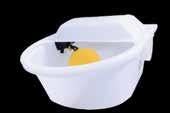


Now, to achieve a higher grade of recycling, Arla is carrying out a largescale test using pyrolysis to convert
80 tonnes of plastic waste a year into new packaging. The pyrolysis process converts plastic waste into oil by exposing it to very high temperatures in a controlled environment.
“Instead of sending our plas-
tic films to incineration, resulting in a one-off energy gain, we recycle them and use the recycled material to create new packaging thus reducing the carbon footprint as well as the need for virgin fossil plastic,” says lead packaging development manager at Arla Foods, Grane Maaløe.
Even if the plastic films were suitable for mechanical recycling, no process is currently available to bring the plastic into food contact material and as a result the films wouldn’t be recycled as new food packaging but downcycled and used for something else and exiting the loop.



“Utilising the processing capabilities at our plant in Germany, we can ensure that the films produced for Arla’s cheese maturing purposes do not exit the loop but instead are recycled into new packaging. A tonne of
mixed plastic does not equal a tonne of new packaging but it does reduce the need for virgin plastic and it paves the way for increased investing in this infrastructure going forward,” says business unit manager Dirk Hardow from Südpack.
Factoring in the loss of the electricity and thermal energy that incineration delivers, and the negative impact of transporting the films from Denmark to Germany, the calculation still comes out in favour of pyrolisis when it comes to overall carbon emissions.
Per tonne of plastic waste handled, the full processing including the pyrolysis process emits up to 50% less than sending to incineration.
Arla and Südpack will be testing this new setup with 80 tonnes in 2023 before evaluating the results.
reduce overfeeding and waste.
THE WORLD’S second largest dairy company, Nestle, says it is exploring different approaches to reduce dairy’s greenhouse gas emissions.
The company says it is working with farmers, suppliers, leading universities, industry organisations, start-ups and local governments to research, test, validate and scale up different agricultural solutions and technologies, including for dairy livestock.

In a message to mark World Milk Day on June 1, the company noted that one area of research is on feed supplements that can reduce methane emissions from enteric fermentation – the cow’s digestion process and the largest source of emissions in fresh milk production.

In the United States, for instance, Nestlé is facilitating research to assess the efficacy and the human, animal and environmental health and safety aspects of feed supplements, which have the potential to reduce enteric methane emissions. The second biggest source of greenhouse gas emissions on a dairy farm is from the feed for cows, for example, from its production, storage, and disposal.
Nestlé is working with farmers to implement regenerative agriculture practices, such as the introduction of cover crops or more widespread use of organic fertilisers, in the production of feed to cut emissions. Farmers on one of Nestlé’s pilot farms in South Africa, for instance, are growing their own multispecies pasture for animal feed while reducing the use of chemical fertilisers.
“This helps improve soil quality, which enables more carbon capture,” the company says.
The company also supports farmers in calculating exactly how much feed cows need based on factors like weight, age, and gestation period to
“Better manure management will also help reduce dairy farm emissions. In Mexico, cow manure is separated into liquids and solids. The solids are composted and returned to the soil while the liquid is incorporated into the irrigation system.”
In addition to these approaches, Nestlé is working with many more dairy farmers around the world. Through over 100 full-scale climate projects, farmers are planting trees on existing pastures, introducing multiple species on pastures, establishing new pastures in woodlands (silvopasture), rotating the land where cows graze, collecting and storing manure, and adopting more renewable sources of energy.
In Brazil, Nestlé is working with more than 1500 dairy farmers to adopt more animalfriendly housing systems, cover cropping and more renewable sources of energy as well as practices to help conserve water.
Nestlé is helping small and medium-sized farmers in Pakistan increase their efficiencies through low-stress housing for animals, farmer capacity building and solar and biogas energy, among others. In Chile, Nestlé is working with farmers to improve pasture yields through multi-species pastures, rotational grazing, and pasture management, while helping them improve nitrogen use efficiency.
Researchers at the company’s recently inaugurated Institute of Agricultural Sciences look for ways to reduce emissions, while considering the nutritional quality of milk, food safety, regulatory compliance, and animal welfare.
Nestle says the effectiveness of new technologies and approaches are evaluated on multiple research farms all over the world. Before being scaled up, they need to prove to be operationally feasible and economically viable for farmers.
“There is no one-sizefits all approach. Different practices and different solutions need to be applied in different combinations depending on an individual farm’s crops, livestock, environ-
ment, soil type, and many other factors.
“Solutions to reduce dairy emissions will be essential in Nestlé’s journey to reach net zero greenhouse gas emissions by 2050,” it says.
THE GOVERNMENT’S bandaid solution for ag emissions pricing – a fertiliser tax – has been rightly shelved.
Agriculture Minister
Damien O’Connor’s proposed fertiliser tax would have been a great way to raise millions from farmers but would it reduce emissions? We don’t think so.
This Government seems to have no idea how it will put a price on ag emissions.
This has given National the chance to accuse O’Connor of “sitting in his office dreaming up all sorts of ludicrous taxes” which farmers don’t have an option to avoid or mitigate against.
O’Connor is now putting the idea to rest, stating the obvious by saying there’s no support among farmers.
THE COST of posting a letter to a rural postal address is about to go up.
From July 1, New Zealand Post is hiking its postage price for bulk mail customers by a substantial 30%. If this price increase goes ahead, the cost of sending mail will have increased 100% in the last five years.
A group of concerned communities and businesses are today appealing to the Government to make a change that will stop the sudden and significant postal price hikes that threatens to cut them off.
The group, made up of representatives from rural communities, not-for-profits, the print and magazine industry and other affected businesses, says an urgent amendment to the deed of understanding is needed as price directly impacts accessibility.
The view of the group is that access points and delivery days are irrelevant if the price is too high for New Zealanders to put anything in the post box.
IN IRELAND climate change is also causing issues for farmers.
European governments have been targeting the agriculture industry for several years. The Telegraph reports that Ireland’s government may need to reduce that country’s cattle herds by 200,000 cows over the next three years to meet climate targets.

According to reports seen by the Irish Independent, to meet the ambitious climate targets, the Irish government has proposed putting up EUR 600 million to pay for the culling of 65,000 cows per year over a three-year period.
The Irish government intends to have the country functioning with zero carbon emissions by 2050. In order to meet such lofty aims, 10% of all livestock in Ireland would need to be “displaced” in the years ahead.
Predictably, Irish farmers are unconvinced by the notion of a mass culling.
A MUTILATION mystery is playing out on a remote Central Queensland property in Australia after a number of cows were found dead in inexplicable circumstances.
Over 18 years, graziers Judy and Mick Cook say 20 cows have been killed in the same strange manner on their Eungella property: organs removed with surgical precision, without a trace of blood left at the scene.
The most recent death was six months ago, according to The Daily Mercury, when the couple found the carcass of a cow with its udder, cheek and tongue cleanly removed. And, once again, there was no blood or marks of movement at the scene.
The “only explanation” they can come to for the mutilations is as strange as the crimes themselves: aliens.
“How is it happening? It must have something that lifts it up and puts it down and doesn’t leave any marks” Judy Cook told The Daily Mercury “(Aliens are) the only explanation I have got.”
IT’S SAFE to say that He Waka Eke Noa – the industry and government partnership to deal with emissions pricing – is dead in the water.
With time running out and no deal in sight, Parliament will likely rise for the final time on August 31 without a decision on how agriculture will pay for emissions at farm level. National has pulled out its support.
In 2019 the primary sector climate action partnership (HWEN) was established to provide an alternative framework for measuring, managing, and reducing agricultural greenhouse gas emissions.
Initially, it was about working towards all farmers and growers knowing their greenhouse gas emissions numbers, having a written plan to manage greenhouse gas emissions, and being supported to adapt to climate change.
The sector came up with its recommendations, but the Government was in no mood to listen and came out with its own consultation document. Sadly, the goodwill that existed at the launch of HWEN has disappeared.
Farmers remain deeply opposed to the government recommendations. Their greatest concern is of course the modelled impacts, which show a reduction in ‘net revenue’ of between 18 and 24% for sheep and beef, and 6 to 7% for dairy.
In terms of output: it shows a reduction of between 16 and 20% in sheep meat; beef potentially may go up initially by 8% under a low-cost scenario but then also falls by 16% under high cost; and milksolids reduce by around 5%. What the consultation document hasn’t looked at are the impacts on rural and provincial communities.
One cannot cut 20% of the output from a sector without major impacts on various communities. Not only will processing jobs be gone at meatworks, there will be all sorts of flow-on effects in rural servicing sectors. Towns like Wairoa are likely to become ghost towns, communities will be ripped asunder and for what? And those emissions will just be shipped offshore and increased.
HWEN has been all about an industry-developed solution. National supported the Government and sector coming up with a sector-led response.
Sadly, when the sector worked for two years and reached consensus on a plan, the Government torpedoed it.
Now National is accusing the Government of killing HWEN, claiming it that is no longer a bipartisan process.
The clock is ticking down not only to the election, but also to 2025 when agriculture would enter the Emissions Trading Scheme (ETS) if no agreement on an alternative method of pricing is reached. New Zealand needs to address climate change but this mustn’t come at the expense of the farming sector.
Publisher: Brian Hight Ph 09-307 0399
Head Office: Lower Ground Floor, 29 Northcroft St, Takapuna, Auckland 0622 Phone 09-307 0399.
General Manager: Adam Fricker Ph 021-842 226
Editor: Sudesh Kissun Ph 021-963 177
Machinery Editor: Mark Daniel Ph 021-906 723 markd@ruralnews.co.nz
Reporters: Peter Burke Ph 021-224 2184 peterb@ruralnews.co.nz
AUCKLAND SALES REPRESENTATIVE: Stephen Pollard Ph 021-963 166 stephenp@ruralnews.co.nz
WAIKATO SALES REPRESENTATIVE: Lisa Wise Ph 027-369 9218 lisaw@ruralnews.co.nz
WELLINGTON SALES REPRESENTATIVE: Ron Mackay Ph 021-453 914 ronm@ruralnews.co.nz
SOUTH ISLAND SALES REPRESENTATIVE: Kaye Sutherland Ph 021-221 1994 kayes@ruralnews.co.nz
ANIMAL DISEASES are associated with significant increases in livestock greenhouse gas emissions and land use, and reduced productivity. They also pose a threat to food security.
Animals suffer from various diseases, some of which can be fatal. Even non-fatal diseases have detrimental effects on animal welfare, productivity, and the livelihood of farmers.
For instance, a cow that is ill may experience reduced milk production or become unsafe for meat consumption. This results in constrained supply chains, potential shortages for consumers and wasted investment and lost earnings for the farmer.
On the other hand, well-managed livestock can be expected to live longer, healthier lives – making them more productive and environmentally sustainable. Innovation in veterinary care has proven successful in improving the survival rates of livestock, which improves farmer returns and reduces greenhouse gas emissions. Taking preventative measures such as vaccinating or deworming offers greater productivity, which leads to higher farm incomes and more food availability for consumers.
A report by Oxford Analytica, commissioned by HealthforAnimals, provides a clear picture on the economic returns of taking preventative measures. Through better adoption of existing best practices and technologies, The Animal Health and Sustainability: a Global Data Analysis report, calculates that livestock could comfortably serve a world population of 9.8 billion by 2050 without increasing current emission levels. This reduced emissions intensity means livestock could meet the protein needs of an additional
the World Health Organization reported that 14% of the New Zealand population was food insecure in 2018.
With inflation rates and food prices increasing,
the situation is getting worse. The New Zealand Government reported in 2021 that one in five children were living in households where food runs out.
Proper management of livestock can play an important role in addressing the world’s food needs. If herds are not properly managed, the loss of
food output reduces the supply of food and the complete proteins and micronutrients available to people.
Increasingly we will need to turn to animal
health technologies for the health of people, animals, and the environment.
• Mark Ross is chief executive of Animal and Plant Health NZ.
1.6 billion people without increasing livestock’s overall GHG emissions level.
The findings are corroborated by other sources such as the Food and Agriculture Organization (FAO) of the United Nations, which estimates that ‘advanced genetics, feeding systems, animal health controls and other technologies over the past four decades allowed industrialised countries to reduce their overall land requirements for livestock by 20 per cent while doubling meat production’.
With climate change rising in importance globally, finding ways to limit and reduce the environmental footprint of animals in agriculture while continuing to feed a growing population will be a top priority. Improving animal health can increase livestock productivity and limit emissions.
The FAO estimates that livestock GHG emissions could be reduced by 18-30% by expanding use of existing best practices and technologies in animal health and husbandry.
Food insecurity will continue to be a major issue for the foreseeable future. Food insecurity is defined as the lack of access to an adequate quality and quantity of nutritious food, and stems from inadequate incomes and high living costs.
Rates of food insecurity have been of concern in New Zealand for a long time, Covid19 and the associated increases in the cost of living have further exacerbated the problem.
The FAO and

Whether you need a quick replacement for your break fencing or you’re planning a major re-fencing project, the team at Farm Source have the product range, the expertise, and the convenience of Click & Collect.
Visit nzfarmsource.co.nz/fencing

NINE YEARS ago, Jaspal Singh arrived from India to study IT. Today he’s contract milking 740 cows in Culverden, North Canterbury.
It was a visit to a dairy farm in Mossburn that changed his career path from computers to cows.
Singh, the 2022 NZ dairy farm manager of the year, and wife Ruby set up a company and moved into contract milking from June 1. They employ three staff.

He told Dairy News that they were very proud to start their own business in New Zealand.
“There’s a lot of hard
work behind this,” he says. “We want to do a lot more in the future as well; hopefully this will lead us to farm ownership at some stage, which is our long-term goal.”
Singh arrived in New Zealand in 2014 as an IT student. After completing a one-year postgraduate diploma in IT he visited a farm in Mossburn and got hooked on the dairy industry.
“I loved how the NZ dairy industry is looking after the animals, grass and the people while producing milk in sustainable and environment friendly way.”
Singh joined the 1000cow Mossburn property as a farm assistant.
“I never looked back
where industry leaders saw my ability and my performance on the farm and my capability to manage my own personal budget and goals and admired that.
“Winning the award has increased my network into the dairy industry and I also got few good jobs offers.”
Singh also has good words for NZ dairy farmers and co-workers who have provided him support and guidance over the years.
He says the biggest challenge was learning to do dairy farming the New Zealand way.
“But the farmers were very supportive to teach me these things and also organisations like Primary ITO have given me
GOLDEN BAY farmer
Ross Patching no longer worries about pukekos tearing holes in his maize silage cover.
Patching, who milks 280 cows in Takaka, says since switching to Geosmart eco silage, there has been less silage spoilage on the farm.
He says the thick silage cover means bird damage is now a thing of the past and the quality of maize silage isn’t compromised by air getting into the stack.
“It was becoming a nuisance for us: we fixed the holes, but they came back next week and did it all over again,” he told Dairy News
“Now there are no holes in the silage cover, there’s less spoilage and we end up with better
quality of silage.”
Patching grows 140 tonnes of maize on farm.
Cows are also fed grass and grass silage. He ordered a

Geosmart eco silage cover in November last year for his grass silage,

■ Geosmart Eco silage covers can be reused for several years, preserving the quality of the feed, and substantially reducing waste.
■ They require very little maintenance and can be easily repaired if damaged, further prolonging their service life.
■ With a thickness of 1mm, the silage cover can adapt to the dimensions of any silo or heap, ensuring optimal anaerobic storage conditions.

■ Heavier weight reduces the amount of ballast needed, virtually eliminating the need to use of tyres
very easy to install. I think it took two of us less than half an hour,” he says.
He also used it to cover a small crop of oats.
wastage of plastic,” he says.
replacing the traditional single-use plastic cover.
“For starters, it was
In March this year, he used the Geosmart eco silage cover his maize silage.
“You can use it again and again so there’s no
Patching still uses old tyres to keep the eco silage cover down but he points out that it’s only one-third of the tyres he would normally use to keep a lightweight plastic cover down.
His plan is to do away with tyres over time and use sandbags on overlaps.
Maxx Calf Health is a controlled intake, molassed block. Developed specifically for calves and youngstock, it contains a number of unique ingredients proven to support health, rumen development, immunity and performance.
THE THEME for this year’s South Island Dairy Event (SIDE) being held at ILT Stadium Southland in Invercargill on June 28 and 29 is “Adapt, Empower, and Succeed”.
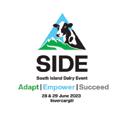
The local committee, a group of farmers and rural professionals based in Southland, chaired by Emma Hammond, came up with the theme after a lengthy discussion about what it takes to be a dairy farmer in today’s environment.
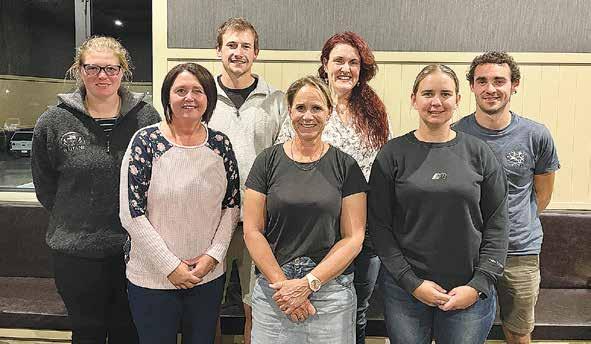
“Farmers not only have the normal challenges of running a business, such as financial pressures, staff shortages and rising costs, they also have to deal with weather events and ever-changing compliance regulations”, says Hammond.
“That is where SIDE
THE SOUTH Island Dairy Event (SIDE) is one of the biggest dairy events of the year, and is run by farmers, for farmers.
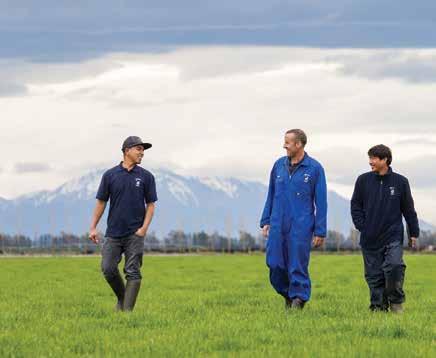
The event features three keynote speakers, 12 workshops, as well as opportunities for dairy farmers and their team to learn and network.
This year’s theme is “Adapt, Empower & Succeed” and the event will focus on supporting farming businesses to evolve in the ever-changing environment they are operating in.
ideas, gain new knowledge and learn how technology can help with these challenges, and hopefully empower them to keep going and enjoy their success”.
SIDE has three high profile keynote speakers lined up, including Black Fern Tyla Nathan-Wong, para-triathlete Shaz Dagg, sharing their inspirational stories, and Deputy Secretary of trade and economics Vangelis Vitalis to talk about “what it takes

to trade with the world”. Comedian Nick Rado will be the master of ceremonies.
In between these empowering speakers, SIDE has 12 workshops which involve Q&A sessions, discussion from industry experts, and feedback from farmers on their experience with such topics as wearables, growing summer safe crops, preparing for
What: South Island Dairy Event (SIDE)
When: Wednesday June 28 & Thursday June 29, 2023





Where: ILT Stadium Southlands, Invercargill Info: www.side.org.nz
adverse weather events, and tackling your to-do list.
As well as the main SIDE conference, BrightSIDE, which is a one-day event created for students, young farmers or those looking to enter or progress through the dairy industry, is being held on the first day of the conference on Wednesday June 28.

BrightSIDE include Kane Brisco on becoming Fit to Farm, followed by Tom
national runner up in the Dairy Trainee section of the Dairy Industry Awards, Brayden Johnston and contract milkers Gonzalo Bascur and Nayabet Espinoza.
The BrightSIDE delegates then rejoin the SIDE conference to listen to a contract milking panel session with farm owners, contract milkers, a banker and an accoun-
Local Southland farmers Amy Johnston and Toria Commings are the
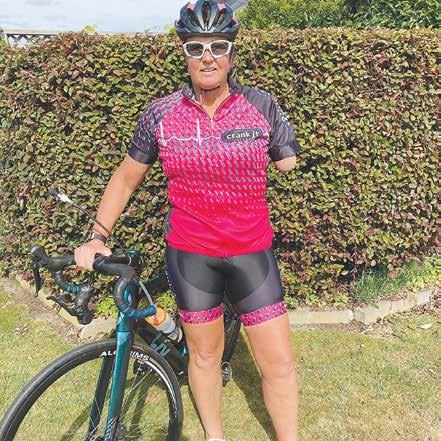
bringing it back to South land after its conception four years ago, which Johnston was involved in.
“We can’t wait to give these young people the opportunity to listen to these inspirational speakers and a Q&A session with up and coming dairy farmers. It is so rewarding to watch people progressing in the dairy industry, and BrightSIDE enables the spark to ignite. Often large and busy dairy farms don’t have the time to coach their young staff, so BrightSIDE is a positive way to inspire and coach these staff, motivating them to stay in the industry, and connecting likeminded people.”
THE 2023 HOLSTEIN
Friesian sales season has marked the end of an era for not one, but seven established Holstein Friesian studs.
Holstein Friesian NZ president Doug Courtman says the dispersal of prominent and proven members’ herds is bittersweet: as we bid them a fond farewell, the sales provide opportunities for other breeders.
“Many newer and often younger members have taken that opportunity to access proven genetics to establish their own studs,” Doug says.
“While the returns this sale season have not, on average, matched those seen last season, they are still well above those recorded by unregistered herds.”
Some sound prices were procured for high quality animals, with
Rockview Doorman Selice EX (Gary and Karen Peters, Stratford, Taranaki) the highest selling lot from all 2023 Holstein Friesian sales: Selice sold for a whopping $25,000 to Joyclas Friesians (Palmerston North).
This was followed by Waiau Rem Rasberry-ET S1F (Jim and Sue Webster, Waitara, Taranaki) selling for $18,800 to Shaun and Anna Thomas, Balclutha (Yellowstone); Aron-Amy Nirvana
Oprah S2F (Craig and Raewyne Passey, Palmerston North) selling for $15,000 to Robert and Anne-Marie Bruin, Otautau (Meander Holsteins); and Cresslands King Doc Lily (Stewart family, Canterbury – Canterbury Collection Sale) selling for $13,000 to K & MK Singh, Hamilton (Lawwal Holsteins).
Two of the sales were combined breeders’ sales – the Taranaki HFNZ Branch Combined Breeders Sale, comprised of five Taranaki studs, and the Canterbury Collection, comprised of a few breeders throughout the South Island.

is ideally placed to meet this. Every animal here has a story, and I could write pages on every animal we have for sale. The story would be about the deep cow families with all their special attributes, and the breeders we have met along the way, many ending up being life-long friends.
“We step away from breeding Holstein Friesians confident that our animals will add to the breed wherever they go.”
Fermoy Holsteins, Westell Properties, Fantastic Farms, Rock View, Aron-Amy, Waterside and Rivendell Holsteins all farewelled many years of breeding Holstein Friesian cattle with full dispersal sales.

Owen and Cathy Cop-
inga of Rivendell Holsteins said goodbye to almost 40 years of breeding Holstein Friesians, having established the stud in Mangakino in the mid-1980s. Rivendell has been based in Otautau, Southland since 2002.
“In all that time we
have kept learning about the Holstein cow – its production potential, type traits and endless breeding combinations,” Owen says.
“Provenance is one of the marketing trends today, and the pedigree Holstein Friesian breeder
Holstein Friesian NZ general manager Cherilyn Watson says the sales have proven that quality pedigree stock is valued by farmers across the industry.
“While it is sad to say goodbye to some longtime breeders, it is also a pleasure to welcome new breeders and the next generation to our membership,” says Watson.
CRAIGMORE SUSTAINABLES is trialling technology to reduce methane in what it claims is a first for the New Zealand dairy industry.

Craigmore’s 400 hectare dairy farm Glen Eyre in Oxford, North Canterbury is the first commercial dairy farm in New Zealand to adopt EcoPond, an effluent
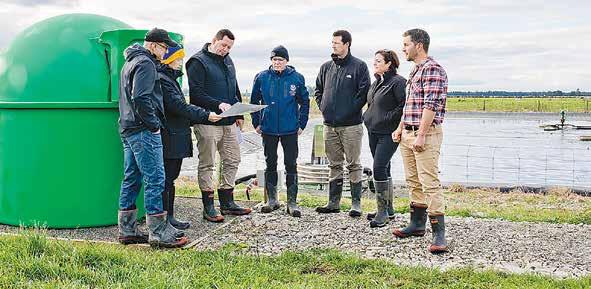
treatment system that removes virtually all methane emitted from effluent ponds with an additive normally used in the treatment of drinking water.
The cutting-edge technology at the farm, which milks 1100 cows, is the result of a collaboration between Ravensdown and Lincoln University.
Craigmore’s general manager of farming Stuart Taylor says that Craigmore is striving to be a leader in the trial and adoption of new technology.

“Craigmore recognises that farming plays an important role in both contributing to and mitigating climate change and we have an ambition to
materially exceed the targets set by the Climate Change Commission through land use change and changes to existing operations.
“EcoPond could play a key role in supporting farmers to reduce methane and help New Zealand meet its climate change targets.
“EcoPond is an important trial for us because we are keen to apply innovative ways to the reduction of emissions and minimise environmental impacts.”
Iron sulphate treatment is highly effective in reducing methane emissions due to increased microbial competition for
organic matter substrate due to the addition of sulphate and ferric ions.
This restricts the growth of the methane producing microorgan-
isms known as methanogens.
Initial tests undertaken in May tested the effluent from effluent pond after it had been treated with iron sulphate through EcoPond. This showed a 95% reduction in CH4 (methane) which is highly significant.
“This technology is another example of New Zealand’s primary sector leading the world in reducing emissions and playing our part in addressing climate change,” says Taylor.
“We have several sustainability programmes in place to ensure we strike a balance between respecting the environment and running a sustainable and profitable rural operation.”
Research is improving the understanding of how dairy farmers can reduce their greenhouse gas emissions and by continually improving, dairy farmers are producing 20% fewer emissions per kgMS than they did in 2000. In 2020, an AgResearch study con-
firmed New Zealand dairy farmers have the world’s lowest carbon footprint for on-farm milk production.

Earlier this year, EcoPond became part of the newly established Ravensdown entity, Agnition. Agnition’s mission is to get innovations on farm faster.
“EcoPond is an important part of the entity’s growing arsenal of technology and innovations that will help quickly deliver practical and sustainable on-farm solutions for New Zealand farmers and growers,” says Agnition chief executive officer, Jasper van Halder.
“It’s great to see Craigmore take a leadership role and demonstrate what can be achieved with EcoPond technology.
“Partnerships and innovation are required in the sector. It’s hard to beat practical on-farm use to really demonstrate the EcoPond advantage and partners like Craigmore show us the future of farming.”
AS WE approach the winter months it’s important to be prepared for the challenges and uncertainties that come with unpredictable weather events. Winter can be challenging enough as it is, so having some contingency measures in place can help take some of the stress off. Here are some contingency measures you can take to protect your farm.
1. Ensure council and dairy company compliance:
Make sure you’re compliant with both your local council and dairy company (this will likely be a condition of supply.)
The last thing you need over winter is to be pressured to make changes, or worse, slapped with a fine. If you’re unsure or just want expert advice on the best plan of action so you can do it once and do it right, talk to an accredited effluent management system designer. They’ll be able to tailor a plan for your situation.
2. Ensure the functionality of your storm water diverter:
Now is a good time to make sure your storm water diverter is functioning correctly or get one installed if needed.
3. Prepare storage and effluent management equipment:
If you need more storage, or want back-up storage, consider purchasing a bladder tank. These
can be both cost-effective and easy to install, requiring minimal earthworks. Being closed storage you also won’t be worried about it filling up with rain.
It is important to empty your ponds and storage in preparation for spring. This is a good opportunity to review your effluent equipment in terms of efficiency, effectiveness and functionality and repair/ replace anything that is not up to scratch.
Portable effluent management equipment that doesn’t require electricity to operate can be a huge benefit.
Tractor driven PTO pond stirrers can be taken to multiple storage areas and are also great to ensure the pond is thoroughly mixed before emptying with minimal sludge or solids left behind.
PTO pumps are great for pumping thicker slurries and from various places.
As for spreading, both drag hose systems and slurry tankers give the ability to spread anywhere over the farm. Drag hose systems are an efficient option for farms with large storage wanting to empty ponds fast, and all in one go. Slurry tankers are a great all-round solution. They allow for easy spreading when you want to, while also being great for handling thicker slurry, and cleaning out ponds, troughs, underbarn storage and weeping walls without the mess of a digger.
4. Invest in a flood pump:
If you live in an area prone to flooding, consider purchasing a flood pump as a ‘no-brainer’ insurance policy. The key
to saving crops and pasture from drowning is time, so pumping the water off fast is critical. It will also save the stress and hassle of having to re-grow and buy in addi-

tional feed. Sharing a pump with your neighbours could be a good option if appropriate. If you do have or get a flood pump, find a good place to park it so that in
the event of a flood you can act fast to deploy it. The faster you can act, the less impact the water will have on your crops and revenue.
5. Be prepared for
power outages:
With unpredictable weather patterns, it’s important to be prepared for power outages. Consider purchasing backup generators or alternative sources of energy to ensure your farm can continue to operate during outages.
By taking these steps now, you can have peace of mind knowing your farm is as protected as you can make it against the challenges and uncertainties of the winter months.
• Lloyd Thomas is a Nevada effluent management specialist


• Rolls up to 15m wide, therefore fewer joins which means less risk, faster installation and shorter good weather window required.
• Design assistance and volume calculations available.

• Nationwide Firestone trained and accredited installation contractors.
• Future proof - dependable performance, 50 year life expectancy even when exposed, 20 year Firestone material warranty
For your nearest installation contractor call 0800 109 093 or 021 280 7266
trained
accredited installation contractors.
• Material warranty from global company - Firestone Building Products.
• Future proof - dependable performance, 50 year life expectancy even when exposed, 20 year Firestone material warranty
• Over 120 million square meters installed worldwide.
• 30 years in the NZ lining business.
For your nearest installation contractor call 0800 109 093 or 021 280 7266
• Over 120 million square meters installed worldwide.
• 30 years in the NZ lining business.

Authorised importer and distributor of Firestone Building Products Email:

Authorised importer and distributor of Firestone Building Products


THIS SHOULD be the decade to focus on sediment loss to reduce its impact on the wider environment.
Sediment is one of the consequences of erosion, which is especially an issue right now given the intensity and number of recent severe weather events which have resulted in soil saturation and no capacity for further absorption of new rainfall.
These factors are exacerbating the risks of landslides, slumping, mass-movement erosion, and sedimentation.
Erosion is the process whereby the land surface is worn away by the action of water, wind, or other geological processes. The resultant displaced material is known
as sediment. Sedimentation is the deposition of this eroded material, the impact of which has been evident in the recent cyclones and other severe weather events.
Minimising natural and induced erosion and maintaining good soil quality are essential for maintaining soil ecosystem services such as nutrient and water holding capacity, maintaining productive capacity, assimilating waste and minimising impacts of sediment and contaminants on water bodies.
There’s a mix of factors influencing soil erosion – climate, soil characteristics, topography, ground cover and evapo-transpiration – that can be addressed through your farm plans. The main soil quality issues in the Waikato region are soil compaction, exces-
Recent severe weather events have resulted in soil saturation, exacerbating the risks of landslides, slumping, mass-movement erosion, and sedimentation.
sive nutrient levels, and loss of soil organic matter.
Climate affects erosion potential both directly and indirectly.
The direct relationship arises from the action of rain – a driving force of erosion – where raindrops dislodge soil particles and runoff carries them away.
Soil characteristics are important in determining soil erodibility. Good soil structure increases water permeability and water holding capacity.
•
Soil permeability refers to the ability of the soil to allow air and water to move through it. Soils with a higher permeability produce less runoff at a lower rate than soils with low permeability.
When soil surface is compacted or crusted, water tends to runoff rather than infiltrate. Erosion potential increases with increased runoff.

Topography – slope length and slope angle –are critical factors in erosion potential because they play a large part in
determining the velocity of runoff.
Soil erosion can be managed by mechanical and biological methods. Mechanical measures –such as terracing, debris dams and other engineering structures –have an immediate effect and operate at maximum efficiency, but their construction and maintenance costs will be high. Biological methods, such as use of live vegetation established from cuttings, rooted plants and poles, are relatively cheaper but
We connect your data to give a real basis to use water
• Correct irrigation
• Tank and pond levels
• Soil moisture
• Climate station
• Good Value... cost effective data
• Easy setup and easy to use
their immediate effect is smaller. However, once established the vegetation provides a self-perpetuating and increasingly effective permanent control.
Poplar and willow poles are ideal to plant on erosion-prone hillsides as their extensive root systems bind and hold the soil in place. Some varieties are also used to provide shelter and windbreaks. Successful establishment of poles requires careful handling, storage, siting, planting, and follow-up management. Waikato Regional council can provide you with advice and assistance on planting willow and poplar poles/bare rooted plants to ensure the best possible strike and survival rates.
If planting is to be delayed to more than a day after delivery, cut the poles diagonally on the

butt end with a sharp axe or slasher, to give two slicing cuts approximately 15cm long. This will facilitate water uptake. Then place the poles in clean, well aerated water, or keep moist under a sprinkler, which assists future root, and shoot growth and increases survivability. Some varieties are susceptible to over soaking, so contact the council for the best handling advice.
The council’s catchment management officers are also available to provide advice on soil conservation, riparian management, and other good land management practices.
• Bala Tikkisetty is the principal sustainable agriculture advisor at Waikato Regional Council. Contact him on 0800 800 401 or email bala.tikkisetty@ waikatoregion.govt.nz
•
•
• Uncomplicated presentation giving simple farm management decisions
• Saves staff time
• We have nationwide service and backup
• We are well established being the leading provider of water measuring systems

• Reliable leading global equipment
• Industry expertise designed for and by agri people
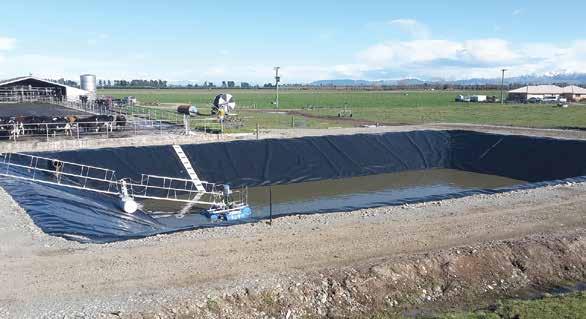
A SUSTAINABLE Catchments programme launched last month will see local farmers, DairyNZ and iwi working together to help improve the health of the Pokaiwhenua catchment in the South Waikato.
This initiative, part of a three-year Sustainable Catchments programme, will deliver work in the Pokaiwhenua (Waikato) and Waimea (Southland) catchments, and across South Canterbury. It is the first project of its kind that has seen DairyNZ work closely with iwi, bringing western science and Mātauranga Māori together to better understand catchment ecological health and how to improve it. The Pokaiwhenua Catchment Group will also be extensively involved in the project.
DairyNZ general manager for sustainable dairy
Dr David Burger says it’s exciting to get the project underway.
“It means a lot for DairyNZ to be partnering with organisations that have similar goals and aspirations. We look forward to moving forward with iwi and farm-
ers to make a difference to the environment, and we hope to identify further partnership opportunities as we continue to focus on environmental improvements at a catchment level.”
The Sustainable Catchments project will include trialling practical tools and interventions on-farm, such as constructed wetlands, to increase awareness and understanding of ways to improve water quality.
The three catchments are identified as priority areas for restoration because monitoring shows they have higher nitrogen concentrations and lower ecosystem health scores than other catchment areas.
“There are opportunities for improvement in



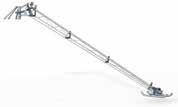
each catchment,” Burger says. “Each catchment has committed landowners who are passionate about improving water quality, and this work will help accelerate the momentum of current restoration activities.
“We will work closely to support local landowners and catchment groups, which already have water quality improvement initiatives underway.”
The first year of work will see catchment assessments completed, including designing monitoring programmes to track water quality and hauora (health) change over time. In the second year, on-farm and catchment activity will demonstrate mitigations with proven science to improve the
health of catchment waterways.



“Catchment work is widely recognised as the way forward in improving the environment, as it achieves better results than a national one-size-
fits-all approach,” Burger says.
DairyNZ is partnering with the Raukawa Charitable Trust in the Pokaiwhenua catchment, where the programme has launched. Raukawa Char-

itable Trust tumu whakarae (general manager) Maria Te Kanawa says her organisation is excited to be involved with this programme.
“Raukawa are committed to our responsibilities as kaitiaki throughout our takiwā (region). As such, we have a key role to play in the revitalisation and restoration of the wider Pōkaiwhenua catchment. We believe, through the inclusion of Mātauranga Māori alongside western science, that we can bring about positive change.
“We are pleased to be partnering with DairyNZ and local farmers as we


collectively work towards healthier waterways in this catchment area.”
DairyNZ has received $3.4 million in government funding for the programme. This funding comes from the Essential Freshwater Fund (EFF) administered by the Ministry for the Environment (MfE) to help improve water quality and reverse past damage to waterways. DairyNZ is contributing a further $1.2 million towards the programme.
The Sustainable Catchments programme is one of 11 funded by MfE.

grow the required food amount.
GROWING MORE with less water: these buzzwords get attention from people as the right, responsible, way to proceed with water use.
So, let’s look at why and where we can go with this.
Globally there is 1500 million ha of arable land.
There isn’t much ability to expand the area so growing the expanding population’s food requirement is about growing more on that space. Around 20 % of that land is irrigated.
Irrigation on that land accounts for around 80% of extracted water use. In most countries there is increasing pressure to limit water extraction. You can see the logic that we have to do better with the available water to
In New Zealand we are naturally blessed with seemingly a large quantity of clean water compared to a lot of countries where supply and cleanliness are extremely limiting. Some of those countries have got extremely innovative in their approach to water use and basically turned barren land into highly productive areas. The technologies to do this are well proven.
Historically in New Zealand, consent allocations tended to be on the high side with a production focus the leading driver. As these consents expire and a concern for the environment comes to the fore, there is much more focus on efficiency.


As such, farmers are going to have to be able to prove why they need
their allocation. Crops and pastures all have a requirement for water. More specifically they need a certain amount
at a certain time. You achieve much higher quality and yields when this is done correctly.
When we take a closer
look at what goes on at present, in trying to meet these requirements, we often see a mismatch in that there is enough water but the machinery to put the water on is not efficient. Border dyke, roto rainers, and guns generally dump way too

much water at once and often have long return times.
The chance of meeting the crops requirement in a dry year is low with this equipment. Pivots and linears are a step forward but if we throw water up in the air in the heat, a percentage of that water doesn’t do anything, so while they are a step forward, they have limits. Supplies to pivots are often not available all the time, making you irrigate windows that don’t match the crops requirement.
We also see the pivot dumping large amounts of water in a short 15-minute period. This often has a much lower impact on the soil moisture than the equivalent amount of rain. In countries where ‘every drop counts’, they tend to slowly drop water consistently which properly wets the soil.
Even with our existing equipment we can do better. To plan water use
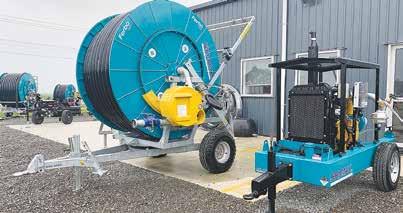
properly, you need data. This includes climate actuals and predictions, soil moisture status and water availability. When you have these records, you can plan forward to ensure you match crop requirements with supply. You can bring in satellite data. Few farmers do this well but the ones that do see real value and we see a dramatic change in their irrigation management.
Watermetrics is there to assist farmers not only in irrigation planning and management, but deal with other important issues like levels, and water cleanliness, which are very important on farm issues.

We have witnessed a lot of data in different farming situations and we would like to share that knowledge. We use a keep it simple approach and display that makes it easy to make better use of water.
• Richard Campion is sales development and business manager at Watermetrics.
PAUL HUNTER farms
240ha of well drained
Mairoa ash soils at Mulroy Farm, south of Te Awamutu in the Waikato.
Cropping centres around 180ha of forage maize that when harvested reverts to annual ryegrass, red clover or annual ryegrass-clover mix, with the latter established by strip tilling.
Having grown maize, initially for grain, since the 1960s, the cultivation regime until 2017 followed the “conventional” ploughing route, followed by a power harrow to establish a seedbed.
Since 2018, strip tillage has been the preferred method for all maize crops, although one trial paddock has been striptilled since 2013.
Alongside the maize cropping, the farm also carries 100 bulls on permanent pasture, 150 that are fattened on the annual ryegrass and around 200 dairy cows brought onto the farm for

a winter grazing period of around six weeks.
Having chosen the strip-tilling route, Hunter explains that he saw many benefits, not least reduced cultivation costs, reduced run-off in adverse weather events and retention of organic matter in the soil profile.
Part of the Growers Leading Change Project established by the Foundation for Arable Research (FAR) and the Ministry for Primary Industries (MPI) in late 2020, Mulroy Farm became one of four Pathfinder farms in Octo-
ber 2022, with the aim of testing new innovation and techniques, aided by the FAR research team.
A current trial is looking at nitrogen-use efficiency in maize growing, with an emphasis on residual N post-harvest and usage over the growing season.
Deep N post-harvest sampling showed residues that ranged from 23kg/ha to 117kg/ha, with an average reading 60kg/ ha over the test area. Looking at the establishment regime, pre-planting designated maize paddocks are sprayed off, followed by the instal-
lation of the cultivated areas where maize will be planted, using an American-built, 8-row, Soil Warrior Unit. Drilling is carried out using a John Deere planter equipped with Precision Planting Technology, to allow variable rate planting with seed rates from 85,000 to 110,000 seeds per ha, based on historical data and remote sensing.
During the trial, three nitrogen application rates were undertaken, using 210kg Sustain N/ha, a variable rate application that ranged from 200 to 285 kg/ha, with the final
AS PART of Paul Hunter’s establishment process, three slightly different methods are employed. Areas planted in pure red clover are baled for winter feed, sprayed off, strip tilled and planted.

Areas sown to annual ryegrass are generally given a first grazing during late May and June, then a home-built 8-row spray is used to establish 10-inch wide areas for the next season’s maize crop. This offers the opportunity to preprepare the ground for the maize crop,
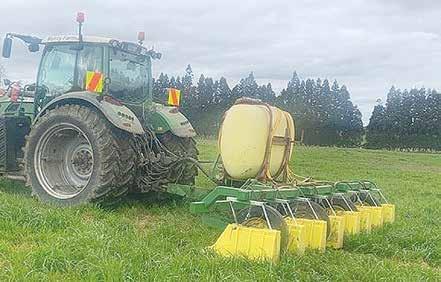
option at 420kg Sustain N/ha.
At three key stages during the growing season, Optimum Soil Adjusted Vegetation Indexes (OSAVI) indexes were recorded via drones, although visually there were no obvious signs to differentiate the three fertiliser regimes.
However, at harvest on 14 March 2023, analysis of starch, sugars, ADF and NDF threw up some interesting findings. On average, the area applied 420 kgN/ha showed 3% lower dry matter and the variable rate area delivered the highest yield at 29 tonnes/ha, compared
but also allows subsequent grazing or harvesting, before the remainder of the ground is sprayed off and strip-till and planting in September. Hunter suggests that the open nature of the root structure in the pre-determined areas means that the strip till process is easier and offer time savings of up to four weeks. The final area, typically making up 40 to 50% of the 180ha maize area, is the post-harvest establishment of an annual ryegrass/red cover mix.
to 26.5 and 27.8 tonnes/ ha in the other areas. The lowest starch percentage was in the variably applied area, although it also offered the highest starch yield per hectare.
Looking at fertiliser costs per tonne of dry matter, the 219 kg/ha application rate saw an average cost of $10.50/ tonne DM, the variable rate area at $11.80/tonne and the 420 kg/ha area the highest at $21.80 per tonne DM (all figures were based on a Sustain N cost of $1,380/tonneJune 2022).
In summary, the initial stages of the trial suggest that growers should
make greater use of Deep N testing pre-establishment, in so doing, getting a better idea of residual N and the ability to adjust total N use over the growing season. FAR researchers also suggested that more work needs to be done on truck-based application methods that typically delivered wide ranging rates of application, often linked to topography. While also suggesting strip-till reduced establishment costs, the question was raised about the differences in efficacy between granular and liquid nitrogen over the growing season.
The Einböck PNEUMATICSTAR is the ideal machine for seeding large areas at very low cost.
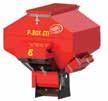

• A pneumatic seed distribution system broadcasts the seeds accurately (up to 6m working width).
• The 4 floating sections with 7mm tines prepare the soil surface and creates a good condition for the germination of the pneumatically delivered seeds.
P-BOX STI
The P-BOX STI pneumatic air seeder is highly accurate for broadcasting seeds like grass or brassicas.
• Plug and play using the Info plug on your tractor (for radar speed and linkage position).

• Easy adjustment from 1 kg to 300 kg / ha.
Seed distribution technology at its absolute finest.
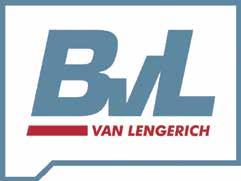
HAVING ALREADY purchased Bogballe in 2017, the Erhvervsinvest Group has now also acquired Bredal, at the same time announcing that the two well-known Danish fertiliser spreader manufacturers are to be merged.
Bredal CEO Anders Bull Jensen and COO Torben Sørensen will become shareholders in
the merged business and will continue in their current roles, noting that the Bogballe and Bredal brands are a good match and will bring a lot of benefits.
“It has made the beginning of a new and exciting journey possible.”
Bogballe management agree, suggesting the
1:
-
merger will bring several opportunities, especially on the market and technology side.
“Agriculture has experienced an increasing digitalisation of farming machinery, so Bredal and Bogballe will be able to further develop their product programmes together,” says Bogballe director Henning Tro-

elsen. Available in more than 45 countries globally, Bogballe’s mounted fertiliser spreaders are offered in working widths of up to 42m and hopper capacity of up to 5500 litres.
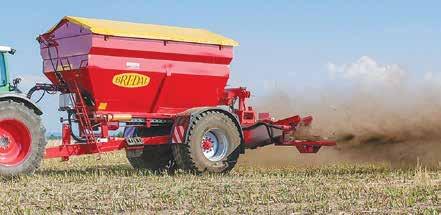

Bredal trailed fertiliser and lime spreaders are offered in working widths up to 36m and hopper capacities of up to 19,000
Bredal trailed spreader.
litres, and are sold in more than 25 countries. Combined, the two companies have 109 employ-
ees working between three Danish factories. In New Zealand, Bogballe is distributed by the Origin
Ag Group based in Cambridge, while Bredal is imported by Ashburtonbased EuroAgri.
- Double overlapped
- High qualit y German steel
- Robust
Fitted with eight rotors and said to offer a working capacity of up to 10.6ha per hour, based on operating speeds of 14-16 km/h, the 8.9-metre working width is suitable to work behind the increasingly popular 9.5-metre triple mower set-ups that continue to appear on New Zealand’s farms.

Offering a wide range of adjustment, the ability to increase the rotor angle rotor allows the crop to be lifted higher and inverted thoroughly, to aid drying over the full working width. Other features include a rotor lock system for easier manoeuvring on headlands, while close spacing between the eight guarded support wheels and tines allows for a cleaner crop, regardless of the terrain.
Individual tines are fitted with four coils for greater flexibility and durability, while the outside arm is on a double acting hydraulic cylinder, ensuring ultimate contour following, even on undulating ground. A further feature is the design of the protective railings which form a truss when folded into position, offering better impact resistance if obstacles are met in the paddock.
Details include a maintenance-free, hermetically sealed gearbox, ensuring integral components are always in a liquid lubricating bath, that in turn means quiet operation and an extended service life. The suspension system incorporates a mechanism that keeps the machine in a central position when lifting, with the addition of shock absorbers for additional support. Floating lower lift points and the stabilising shock absorbers allow a wide range of contouring ability and makes manoeuvring easier. An optional front support wheel allows for even better turf protection and is ideal for working across uneven, hilly terrain.
Based in Northern Poland, SaMASZ supplies more than 50 markets globally, with a team of more than 1000 workers producing wide ranges of mowers, tedders, and rakes. FarmShop NZ, secured the SaMASZ agency in 2019.
www.farmshop.co.nz








